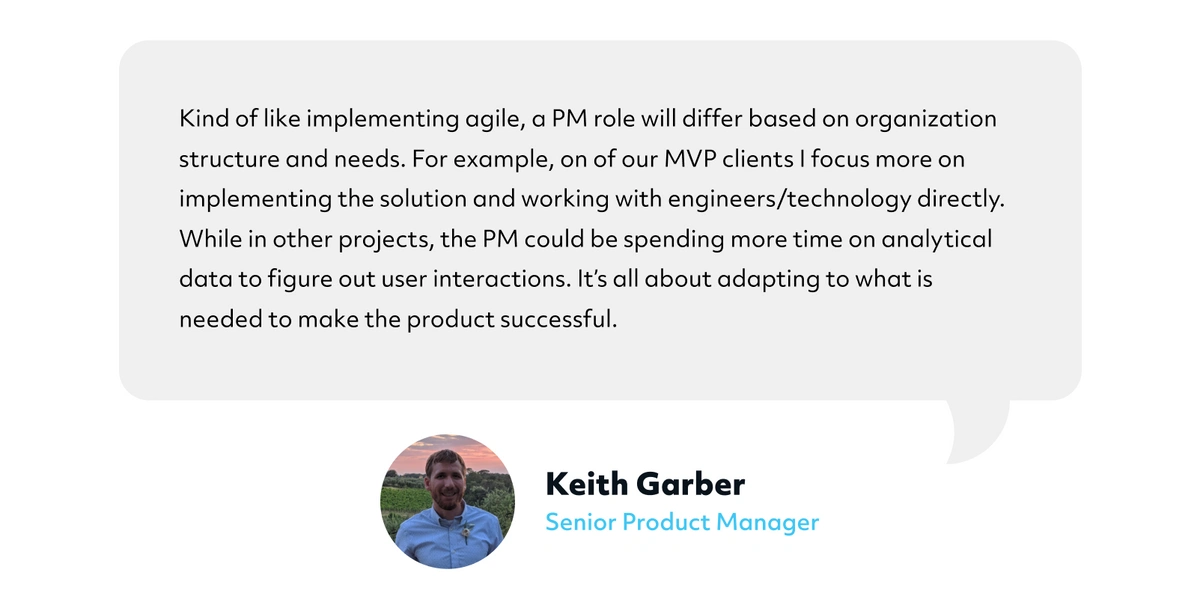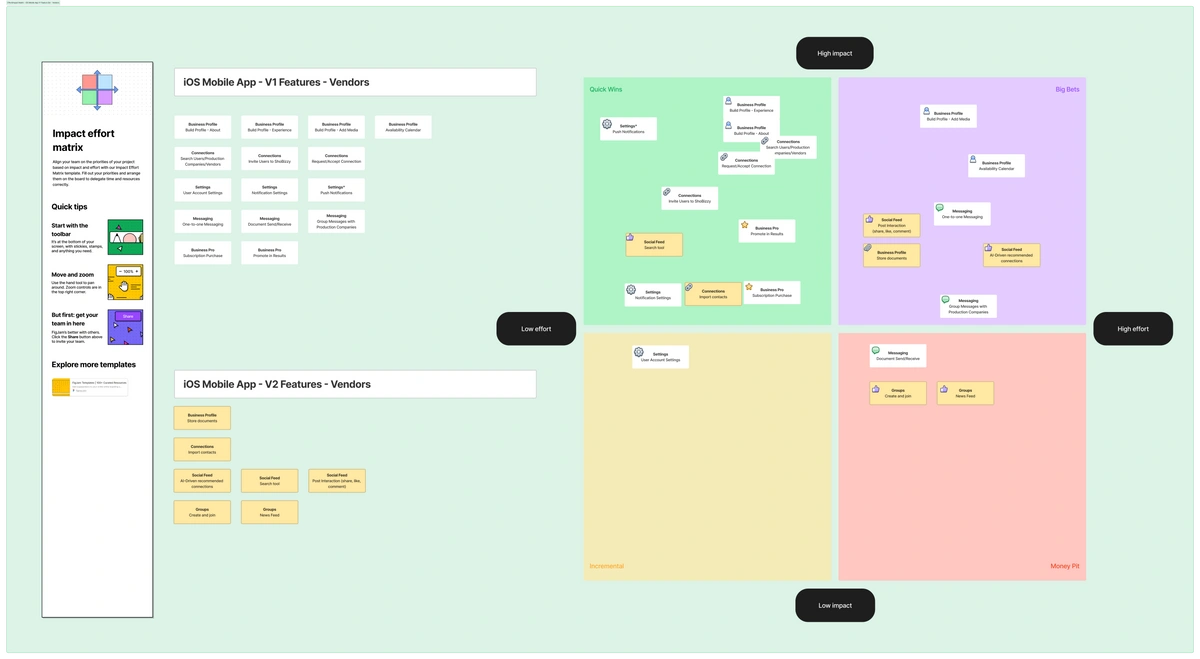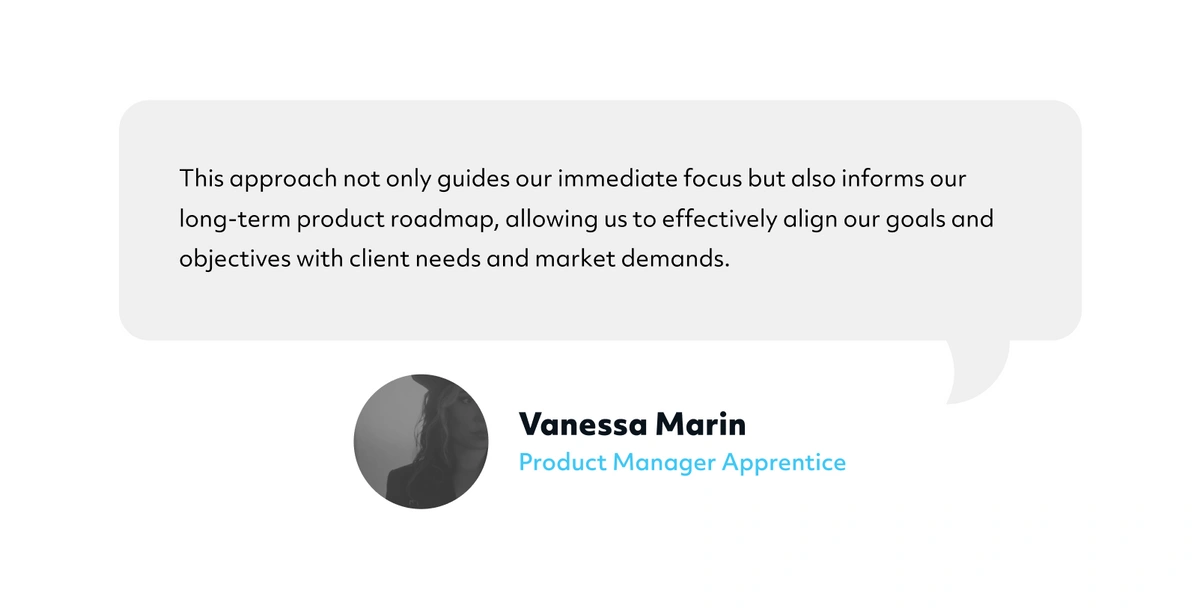Digital Product Management Fundamentals Every PM Should Capitalize On

The landscape of digital product development is ever-changing, with new technologies, methodologies, and best practices constantly evolving within the tech space. If you’re a digital product manager, staying ahead of these changes is crucial to the success of your digital product, whether you’re starting from an idea or you’re looking to grow a product’s offerings. But where do product managers even begin? What building blocks are considered essential to the product development process and how can they build on them to provide value to clients? What separates an impactful Product Manager from other PMs?
To answer those questions, its important to know what a digital product manager (PM) does and why their work is crucial to digital product development. A digital product manager is responsible for steering a digital product throughout its journey, ensuring it aligns with user needs and overall business objectives. Their role includes taking information from various sources (user feedback, data analytics, business strategy, market trends, etc.) and pulling it all together to create a strategy for a product. Then they identify the path to realizing that strategy, taking into account resources (e.g. design and engineering) capacity and focusing on team alignment. But our years of experience at Rapptr have taught us that the difference between a good PM and a successful PM is going beyond the making of a product that is user-centric and profitable for clients. Its being able to visualize the product vision, carry it forward, and to look at long-term strategy to ensure the product stays user centric, profitable, and more valuable to end-users. For this blog post, we highlight a few fundamentals of digital product management to discuss how we use the Rapptr advantage to achieve this.
Understanding the Product
Understanding the target market for product development is the foundation of any successful product and can largely determine the likelihood of market performance. Its no surprise that data fuels most, if not all insights for developing a digital experience that users will love, but quality-focused PMs should always take advantage and balance quantitative and qualitative data from their clients’ end. Quantitative data is great because it can concretely indicate trends and behavioral patterns from users over time, but they’re pretty vague when attempting to understanding why users may prefer one feature over another. Maybe one feature is more helpful than the other, or maybe the user feels like the animation is more appealing on another. Qualitative data is vital for this reason, because it can help offer more robust insights on things like who’s using the product outside of its intended market or why they may not be looking for certain changes or implementations. Data can be interpreted a variety of ways and its very easy to make conjectures about where to go with the product. And while the data doesn’t lie, it doesn’t always present itself clearly, so utilizing client research to understand the nuances of the product will separate PMs who treat projects as tasks needing completion versus PMs who are looking to genuinely understand the product and why the client is looking to position it as a solution for end users.
Setting Priorities & OKRs (Objectives and Key Results)
How do digital product managers decide what to work on when? In the fast-paced world of app development, organization and flow matter because they can impact quality and product delivery. PMs will use OKRs to provide a framework to set and track objectives and their outcomes to make adjustments as needed. Objectives here refer to what managers aim to achieve, with most of them being qualitative. Key Results on the other hand, are quantifiable metrics that measure the success of each respective objective. For example, you may want 10% of users to use a new feature at least once in a two-week period or want to increase conversion by 5% from free to premium subscriptions. PMs will also use techniques like the MoSCoW method and the Effort/Impact Matrix to prioritize tasks following a client workshop.
Rapptr PMs love using the MoSCoW method because it categorizes tasks as Must-haves, Should-haves, Could-haves, and Won't-haves and allows for flexibility. They can develop a robust framework for understanding the importance and urgency of multiple tasks, helping make clear what can and will be delivered for the client in the short/long term. Here, our PM Apprentice Vanessa Marin explains the benefits of using the MoSCoW method in our work:
Advancing Agile Methodology
Understanding Agile & Scrum frameworks helps digital product managers by using proven, structured methods to evolve requirements and solutions throughout any stage of development. Agile and Scrum frameworks promote close collaboration among teams and relevant stakeholders and should be advanced to strengthen the partnerships you form internally and externally. At Rapptr, we’ve integrated them into our playbook strategy as powerhouse tools for embracing challenges and continuously delivering value. We use Scrum for example to complete iterative work we might’ve missed or decided to build upon while working in sprints. For some of our PMs, Agile & Scrum frameworks impact the quality of the project and how we optimize sprints to exceed expectations:
Enhancing Communication and Collaboration
Of course, it should go without saying that digital product management is not a solo endeavor and should never be. Effective communication and collaboration is pivotal to problem-solving and decision-making in product development, but it goes beyond motivating and setting expectations for teams. Digital product managers should capitalize on effective communication and collaborative skills to guide next areas of inquiry and identify new opportunities to address weaknesses or concerns. Any PM can facilitate “communication” and “collaboration”, but the difference between baseline-accomplishing PMs and forward-thinking PMs is the use of collaborative and communication best practices to allow teams members to leverage each others’ strengths and obtain new subject matter knowledge- which simultaneously benefits them by accelerating the amount of work they could do individually. Tools like Slack and Jira can support this by providing a centralized place for project information, discussions, and task management platforms where teams can interact, share information, and manage projects in real-time, but its up to PMs to create those environments where their teams are not only productive, but motivated and thinking out the box as the standard.
When a PM meets with a client, it should always be centered around creating a dialogue, not just announcing the communications. Clients themselves are experts-after all, they have conducted their own research, developed their business plan, and made it far enough to seek a team that can bring their product to life. But they may not know what information we’re missing from them to bring that vision forward or how we’ve come to our conclusions for their roadmap. Using communication to ask the right questions and match their energy is what allows for successful, dynamic partnerships.
Innovating with Analytics and Feedback
We know that analytics and feedback are essentials to almost any project, whether they’re digital or physical. But what distinguishes an effective PM is their use of product metrics to reflect on progress and determine appropriate courses of action for the project throughout the product journey. Analytics provide valuable data-driven insights that inform decision-making at every stage of the development cycle, so ensuring that resources are allocated efficiently to optimize user-centric development to meet the needs and expectations is key. Analytics and feedback are also incredible resources that can validate market assumptions or indicate when a pivot may be necessary to better meet market needs, helping with overall strategic planning and market positioning. While we previously mentioned that qualitative data is pivotal in understanding the why of end-user behaviors and patterns, using robust analytics can help address the where to of those same engagements.
At Rapptr for example, PMs use data to inform strategy by looking at the funnel that users would take and where they’d drop off during a digital session. They hone in on those valuable moments: where is the biggest drop off for end users? What barriers are hindering them from getting to the desired destination/stage? Did teams guess right at the first attempt? Are users finding new uses for features that the team didn’t realize before? The key here is to use data is to test some of those hypotheses (i.e. "we think people are using xyz because _.”) because ultimately, it allows PMs and their respective teams to invest the right resources and time into unlocking more value for users.
Defining the Product Vision
When it all comes together and a prospective client says, “I have an idea for an app. Where do I start?”, the biggest fundamental in effective product management is a PM’s ability to develop a clear and compelling product vision from the client’s concept to completion. A product vision serves as the North Star for teams, guiding every strategic decision made and providing a framework for making adjustments throughout the process. But most importantly, it helps with buy-in from stakeholders, internally and externally. Teams will be aligned and move in the right direction if they understand the vision of the project, while clients will develop more trust and become open to hearing more guidance for their product.
For Rapptr PMs, a championing PM will go beyond what the client wants; product managers should comprehensively understand the nuances of the client’s product, their market, the likelihood of success, overall business plan objectives, economic and political factors that could impact launch or scaling efforts, and more. But they should be able to envision what the next 6 months and 12 months look like the client based on those nuances, and its their role to paint excitement and forward-thinking that’s grounded in reality. It then becomes easier to sell ideas for an app when there’s a strong, clear vision backing them. That’s how stakeholders, internally and externally find the value in the product and in the expertise of a product manager.

Building for Overall Impact
While these are only a handful of digital product management fundamentals that are key for success, capitalizing on them throughout the product life cycle supports the PM’s role in creating digital products that are user-centric, profitable, and sustainably innovative. The role of a PM itself is both strategic and tactical, requiring a balance of big-picture thinking and detail-oriented execution at every level- making them a key figure in the product’s life cycle journey. Mastering these basics paves the way for developing digital products towards success in a dynamic and competitive landscape, with the rewards benefitting end users the most. These fundamentals are necessary building blocks to master successful product management and match a client’s solution to a user’s paint point, but we believe in achieving more than the bare minimum. It's all about staying knowledgeable and embracing the spirit of continuous improvement to ensure products created are impactful and functional. PMs can also draw inspiration from analyzing published case studies and playbook strategy to identify what may or may not work for their approach. For example, you can check out some of our case studies here to see how we use the Rapptr difference to build and scale for our clients. As digital product managers build on these fundamentals, they’re sure to create experiences that communicate the unique value offering of their company’s work while innovating for all in the industry.
Read more academy articles →




